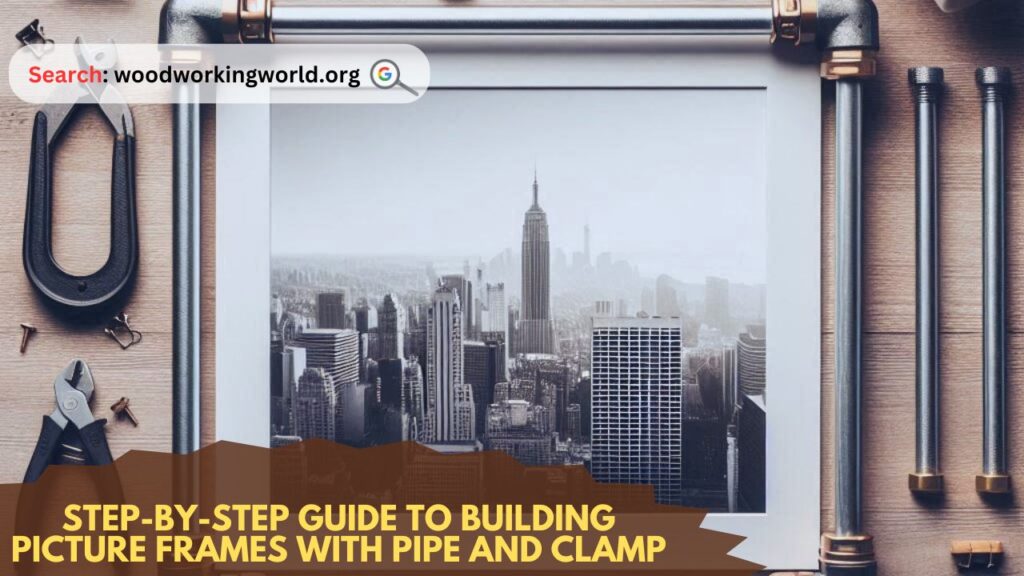Step-by-Step Guide to Building Picture Frames with Pipe and Clamp
Creating custom picture frames using pipe and clamp methods is a creative and cost-effective way to display artwork, photos, or memorable moments in your home. With this step-by-step guide, even DIY beginners can craft unique and sturdy frames.

Materials Needed
To build a picture frame using pipe and clamp techniques, gather the following materials:
Wood and Hardware
- Four pieces of wood for the frame (cut to desired size)
- Pipe clamps (long enough to fit the frame size)
- Wood glue
- Corner brackets (optional for extra stability)
- Picture frame hardware (hangers, mounting brackets)
- Sandpaper (120 and 220 grit)
- Wood stain or paint (optional)
- Clear sealant (for protection)
Tools
- Measuring tape
- Miter saw or hand saw
- Pipe clamps
- Drill and drill bits
- Clamps (for holding pieces steady)
- Paintbrushes or rags for staining
- Safety goggles and gloves
Step 1: Measure and Cut the Wood
- Measure the dimensions of your picture or artwork.
- Add extra space to accommodate the rabbet (the recessed edge where the picture sits).
- Use a miter saw to cut the wood pieces at a 45-degree angle for clean, professional corners.
Tip: Double-check your measurements to ensure accurate cuts.
Step 2: Prepare the Wood Pieces
- Sand each piece of wood with 120-grit sandpaper to remove rough edges.
- Finish sanding with 220-grit for a smooth surface.
- Apply wood stain or paint if desired, and let it dry completely.
Tip: Apply a clear sealant for added protection and a polished finish.
Step 3: Assemble the Frame Using Pipe Clamps
- Arrange the wood pieces on a flat surface to form the frame.
- Apply wood glue along the mitered edges.
- Fit the corners together snugly.
- Place pipe clamps across the frame, one at the top and one at the bottom.
- Tighten the clamps evenly until the joints are secure.
- Wipe off any excess glue with a damp cloth.
Tip: Avoid over-tightening to prevent warping or damaging the wood.
Start Your Next Project With Teds’ Archive Of 16,000 Plans!
Instant access to all 16,000 woodworking plans with step-by-step details, photos, materials lists and more
Monthly free plans with lifetime membership access – No renewals, recurring fees or other charges


Step 4: Reinforce the Corners
- Once the glue has dried (typically 24 hours), release the pipe clamps.
- Check the frame for stability.
- Drill pilot holes and attach corner brackets if additional reinforcement is needed.
Tip: Corner brackets are especially useful for larger frames.
Step 5: Attach the Backing and Hardware
- Cut a piece of backing material (such as thin plywood) to fit the frame.
- Secure it to the back of the frame using small screws.
- Attach picture hangers or mounting hardware to the top of the frame.
Tip: Use a level to ensure the hangers are aligned correctly.
Step 6: Insert the Picture and Finish
- Place the picture or artwork inside the frame.
- Add a protective layer such as glass or acrylic if desired.
- Secure the backing in place.
- Double-check all hardware for stability.
Tips for Success
- Choose Quality Wood: Select hardwoods like oak or maple for a durable and elegant frame.
- Practice Cuts: Test miter cuts on scrap wood to perfect your technique.
- Clamp Evenly: Ensure even pressure when tightening pipe clamps to avoid misalignment.
- Use Safety Gear: Always wear goggles and gloves when cutting and sanding wood.
Quote: “Building your own picture frames not only saves money but adds a personal touch to your cherished memories.”
FAQs
1. Can I use other types of clamps instead of pipe clamps?
Yes, bar clamps or corner clamps can also work, but pipe clamps provide superior flexibility for larger frames.
2. How do I prevent glue from seeping out of the joints?
Apply glue sparingly and wipe off excess immediately with a damp cloth.
3. What type of wood is best for picture frames?
Hardwoods like oak, cherry, and maple are ideal for durable and elegant frames.
4. Can I build frames without mitered corners?
Yes, butt joints or lap joints are simpler alternatives, but mitered corners offer a cleaner look.
5. How long should I leave the clamps on?
Leave the clamps on for at least 24 hours to ensure the glue sets properly.
Conclusion
Building picture frames using pipe and clamp methods is a rewarding and straightforward DIY project. By following these steps and tips, you can create custom frames that beautifully showcase your artwork and memories. With a little practice and creativity, your frames will be both functional and visually stunning.